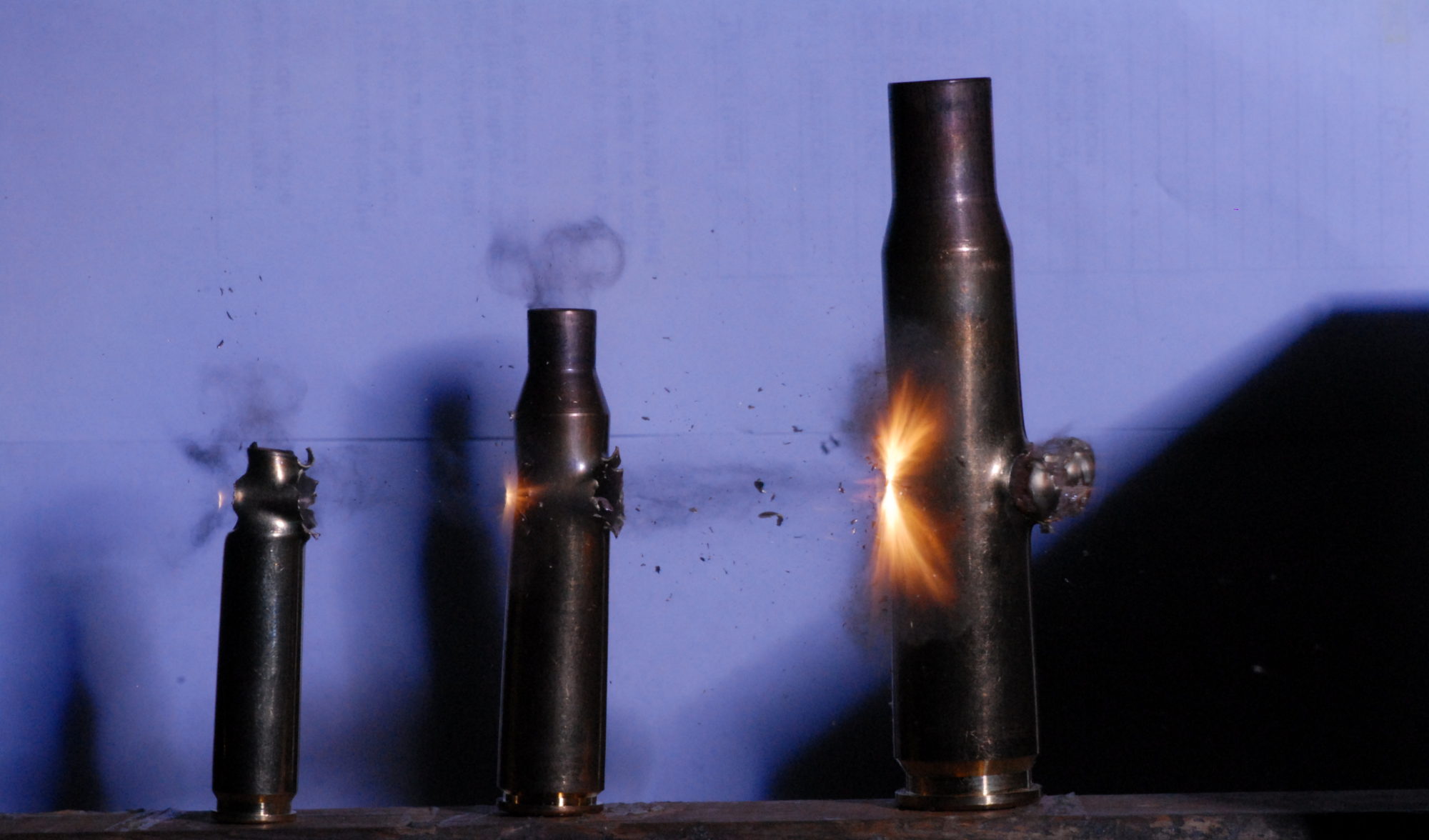
I like reloading tools and gizmos a lot. After being in the industry and helping design and test reloading tools it just comes naturally to want to try every new thing I come across to see if it is something that will make me more productive. We enjoy testing products for other companies and manufacturers and welcome any opportunity to help the industry in any way.
Over the years I have narrowed down the items that I use regularly to the things that work best for me and the things that I trust. I know that my trusty setup will produce the desired results, especially for the calibers that I load for regularly.
This is where we need to exercise caution, blindly trusting something because it has worked for the last umpteen times that could get us in trouble. I finally got around to loading those 45-70’s for Jay this week and it made me wonder.
When you have an established load that you may have literally loaded thousands of times do we fall into a false sense of confidence that our equipment is infallible?
It is extremely easy to go with the flow and not be as diligent as we should. Our equipment can change without our noticing. (Kids, Grandkids and Godchildren love to mess with those fancy micrometer top dies, or make “adjustments” to powder throwers)
A die lock ring can loosen slightly and allow a minute change. Crud and debris can build up on the bottom of dies, changing the actual sizing or seating depth. Cast bullets are prone to build up lube and small shavings of alloy, collecting in places it shouldn’t be. A great example of this is inside the bullet-seater plug, you could actually be seating your bullets deeper than intended due to a build up of junk in the seater.

While these variances are probably not severe enough to cause a safety issue, they can certainly cause a performance issue and make for a frustrating day at the range. Your ammo has become slightly inconsistent, and you spend the day chasing everything else trying to find the problem, you know it is not the ammo because you have not changed anything…. Right??
The good news is that this is easy to catch and easy to fix. If you are following the best practices and periodically checking things as you go this should never be an issue. Take the dies down and give them a good scrub occasionally. Inspect the cases after cleaning, Look at the cases after being sized, Feel the primers for proper seating depth, Check the O.A.L every few rounds, look at the projectiles for consistency and damage before and after seating. Your eyeballs are the best calibrated reloading tool you have, simply inspecting everything visually during each reloading step is the best way to catch a problem.
One thing I want to call out specifically is powder and charging the cases, this step holds the greatest potential to cause us harm. We must be diligent and mindful during this step. A vital part of that is not blindly trusting how we dispense the powder, there are many ways to dispense a powder charge.
By hand, trickler, powder thrower, or automated dispenser. I even know a guy who shall remain nameless that still uses a LEE dipper!
The important thing is to not blindly trust whatever method you use; you must have a way to double check your chosen method. Many people use digital scales because they are user-friendly, accurate, and precise.

They are not infallible, just like any other electric device they can have issues and give bad readings. Two digital scales is a wonderful way to check the consistency of your loads… its also expensive and unnecessary, if you want two scales by all means get several but you can accomplish the same thing with a simple check weight set from Amazon, that gives you a known weight you can use to check your scale periodically and confirm it’s still calibrated and weighing properly.

A quality beam scale will never let you down and can serve as a cheap “master” scale to check a digital scale
Another alternative is a simple balance beam scale, if you shop around, you can get a nice one quite reasonably, it will give you a way to double check your powder and be a versatile tool on your bench.

The last step is simply looking at the charged cases, you can do them in batches or one at a time, the batch method makes it easier to spot an inconsistency, it has some drawbacks but is superior when loading something that could be double charged and not overflow the case. The important thing is you use some type of method to check your charges. As we have said before, having to unload ammo you just loaded is frustrating and time consuming, following these ideas should keep you out of that situation, and more importantly keep you safe.
All these trivial things add up to you making clean consistent ammo that will perform as intended when you need it. I find a great deal of satisfaction in making ammo that is better than anything I could buy commercially.
It does not matter if you are loading a couple thousand 9mm for the weekend or 20 of the most perfect rifle rounds for that distant target, remember Trust but verify.
Marc
